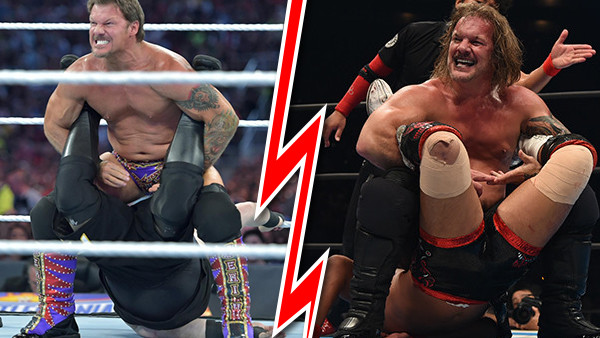7 Things WWE Could Learn From NJPW Dominion 6.9
Break Down The Walls

Saturday's Dominion 6.9 in Osaka-jo Hall show was the latest New Japan Pro Wrestling production to promise the world and somehow deliver an entire unchartered universe of planets, suns and stars instead.
An excellent card on paper materialised as as a magnificent one in practice - layer upon layer of gradually advancing excellence conspired to craft the greatest pay-per-view this author has ever seen. A supershow of worthy of superlatives even beyond the legendary WrestleMania X7, a pay-per-view usually ranked atop the god tier of events for most wrestling fans across the taste spectrum.
Dominion surpassed not just that, but every other attempt to be that from the collected worlds of professional wrestling, lucha libre, 'sports entertainment' or label slapped upon what is ostensibly still the same product. In 2001, the 'Show Of Shows' was the climax of a commercial boom for the industry, but 17 years on from that, the Osaka-jo Hall classic was instead just the celebration of a different kind of golden era.
Yes, the industry at large appears in rude financial health, but even more than that that there exists a hitherto unseen vitality between the performers and the audience as a result. Connections through t-shirts, tweets and chants that enhances narrative with unabashed adoration.
It's ironically the one area WWE struggle most with recreating. Their battered bruised system has severed relations between fans and some of the creatively mismanaged stars. It's not the only area where they could do with NJPW sliding over a crib sheet...
7. How To Pace A Pay-Per-View

As with January's Wrestle Kingdom 12, NJPW flew over the five-hour mark for Dominion, but there's still yet to be a report written or anecdote shared of a fan choking on bloat, begging the pleading for the card to come to an end as is so often the case with the supersized supercards offered by WWE.
It was a remarkably gradual ascent to this terrifying new era of multi-hour multi-platform monthlies from the company, with the Network removing the restrictions previously in place on pay-per-view time despite little consideration giving to the creative directions of all the wrestlers or the wrestlers themselves that suddenly had more time to fill. WWE's old method of hot opener/bland middle/Divas cooldown/hot main event was elongated, rather than exterminated. The loss of the Diva spot plus the company's profound misunderstanding of what makes a hot main event in 2018 has knackered it further, with cards becoming an ungainly slog. Roman Reigns is the connective tissue between the catastrophic main events at both WrestleMania 34 and Backlash, but those audience would have probably only been bored or exhausted rather than angry or half-way out the door.
The never-decreasing rise in momentum (actual momentum, not WWE word-of-the-week momentum) of the NJPW cards is something that helps extract the best of every match. The short time-fillers are short time-fillers, whilst the big matches are Big. F*cking. Matches. Ordered like they're listed on websites (by titles and prestige), very little outstays its welcome and there exists a tangible target for those underneath the headline attraction to get there.